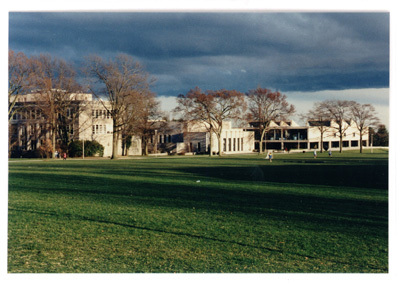Introduction
Founded in 1911, Connecticut College was at first for women only but began admitting men in 1969. Resting on what is referred to as “the hill” in historic New London, Connecticut, the picturesque campus is located halfway between New York City and Boston and overlooks the Long Island Sound.
CC students are their own breed—intelligent and inventive souls with a strong commitment to social justice. Fewer than 2,000 students from all parts of the world (a sur - prisingly large majority from “outside of Boston”) come together to partake in a four-year journey—academic, social, and personal transformations. It is a highly competitive coeducational liberal arts college where the classes are like exotic lands of thought that you enter at your own will, the people—your tour guides. With a tradition of shared governance, social activism, and an Honor Code, it promotes an academically strong, socially conscious home base from which to embark on the inevitable adventures to follow beyond the undergraduate years.


